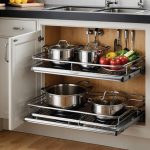Understanding Customer Loyalty in the Restaurant Industry
In the competitive world of dining, customer loyalty is crucial for restaurant profitability. Regular customers not only drive sales but also provide word-of-mouth marketing, bringing new patrons to the table. Understanding what influences restaurant retention can help business owners tailor experiences that keep diners coming back.
Several factors play a pivotal role in shaping customer loyalty and retention, including quality of food, level of service, ambiance, and perceived value. A positive dining experience where customers feel valued and recognized significantly increases the chances of repeat visits. A strategic approach to customer feedback can also uncover areas needing improvement, helping refine the restaurant’s offerings.
Have you seen this : Revolutionizing Fine Dining Staff Training with Virtual Reality: Elevate Learning Experiences Through Cutting-Edge Tech
One effective way to boost loyalty is through thoughtfully designed loyalty programs. These can vary broadly but generally include point systems rewarding frequent visits, tiered memberships offering exclusive benefits, and cashback systems. Each type of loyalty program provides unique incentives, catering to different customer preferences and enhancing their commitment to the restaurant.
Integrating these insights into your restaurant strategy can significantly elevate customer experiences and loyalty, two cornerstones of lasting profitability and competitive advantage in the bustling restaurant industry.
Also to see : Enhancing Culinary Atmosphere: Expert Scent Marketing Techniques to Transform Dining Experiences
Designing an Effective Loyalty Program
A thoughtfully designing loyalty program can significantly impact customer retention and engagement. Key elements of a successful loyalty program include loyalty program features like clear reward structures, achievable goals, and attractive incentives. Ensuring that these elements align with the restaurant’s brand and customer base is crucial for program effectiveness.
Customization and personalization within loyalty programs heighten their appeal and effectiveness. Tailored program benefits ensure customers receive rewards that resonate with their individual preferences and dining habits. This level of personalization fosters a deeper connection between the customer and the restaurant, helping to convert one-time visitors into regular patrons.
Incorporating technology into the loyalty program design streamlines the customer experience, making it easier for patrons to track rewards and businesses to manage the program. Mobile apps and digital platforms allow for seamless interaction, offering convenience for customers and operational efficiency for restaurant owners.
For an optimal design, it’s beneficial to consider customer feedback and data analysis. This approach allows business owners to continuously refine features and benefits, enhancing the program’s attractiveness and effectiveness over time. By focusing on these key elements, restaurants can create loyalty programs that not only drive customer retention but also boost overall profitability.
Implementing Your Loyalty Program
Implementing a loyalty program requires careful execution to ensure its success. Effective execution strategies play a crucial role in rolling out the program seamlessly. Begin by establishing clear objectives and a timeline to guide the process. Engaging and training staff is vital. Staff should be well-versed in the loyalty program‘s details, enabling them to communicate and promote it effectively to customers.
Staff training is essential for a successful rollout. Employees need to understand the benefits and functionality of the program to encourage customer participation. Comprehensive training sessions, role-playing scenarios, and accessible resources can help staff internalize the program benefits and execution strategies.
Communication strategies are just as important. Promote the program through various channels, including in-house signage, social media posts, and email campaigns. Highlight the unique advantages of joining the loyalty initiative, focusing on personalised rewards and engagement opportunities. This not only increases awareness but also drives customer interest and participation.
A successful implementation hinges on these critical elements. With well-trained staff and a robust communication plan, a new loyalty program can thrive, drawing in repeat customers and fostering long-term loyalty to the restaurant.
Analyzing Successful Case Studies
Understanding real-world examples of loyalty program success provides valuable insights for restaurant owners aiming to improve customer retention. By examining case studies, we can identify effective strategies and learn from best practices.
Case Study: Restaurant A’s Loyalty Program
Restaurant A implemented a structured loyalty program featuring tiered membership levels. Customers earned points for each visit, which unlocked exclusive rewards as they advanced through tiers. Success metrics showed a 20% increase in repeat visitors within the first quarter. This approach harnessed customer engagement with achievable goals and enticing incentives.
Key Takeaways and Lessons Learned
- Simple rewards systems can lead to significant increases in customer loyalty.
- Achievable goals enhance customer retention by motivating participation in the loyalty program.
- Structured membership levels act as strong incentives for continued patronage, illustrating that a well-designed program can measurably boost restaurant profitability.
Analyzing these examples demonstrates that tailored loyalty programs, when properly executed, can have a powerful impact on customer behaviour and sales. The insights gleaned highlight the adaptability and creativity required to develop programs that resonate with varied customer preferences.
Best Practices for Loyalty Program Management
Loyalty program management goes beyond just setting it up; it demands continuous fine-tuning and assessment to ensure its success. Ongoing evaluation and adjustments are vital. By routinely reviewing program performance, restaurants can ensure that their loyalty strategies remain effective and relevant.
To keep customers keenly engaged, businesses should implement strategies that renew patrons’ interest. Offering seasonal promotions or refreshing rewards can reignite enthusiasm and participation. Moreover, integrating customer feedback into these adjustments can reveal untapped opportunities, adapting offerings to better meet patrons’ desires.
Unfortunately, several common pitfalls can derail even the most promising loyalty program. Avoid making rewards unattainable, as this might frustrate customers rather than fostering loyalty. Furthermore, overcomplicating program rules can alienate potential participants, driving them away rather than drawing them in.
A focus on best practices will enhance program efficacy. Ensuring that systems are intuitive, rewards are appealing, and communication is clear remains paramount. By adhering to these principles, restaurants can maintain a vibrant loyalty program that yields mutual benefits for both the establishment and its customers. This proactive approach to management sustains engagement and bolsters long-term customer allegiance.
Metrics for Measuring Success
Understanding the effectiveness of a loyalty program hinges on identifying and analysing relevant success metrics. Essential key performance indicators (KPIs) include the number of repeat visits, average spend per visit, and membership growth rate. These metrics offer valuable insights into program effectiveness.
Collecting and analyzing customer feedback is paramount in assessing satisfaction and areas for improvement. Feedback helps tailor program features to better meet customer needs, fostering a more robust engagement. Utilizing surveys, online reviews, and direct comments can reveal crucial perspectives.
Tools and software play a crucial role in tracking loyalty program success. With advanced features, these solutions can automate the collection and analysis of data, providing real-time reports on customer interactions and engagement levels. Technology like CRM systems and specialised loyalty platforms offers a deeper understanding of customer behaviour.
By regularly evaluating these metrics, restaurants can ensure their loyalty programs remain effective and adaptable. This approach not only helps refine strategies but also strengthens customer relationships, ultimately boosting overall restaurant performance. Through these comprehensive metrics, businesses gain the insights needed to grow and sustain effective loyalty programs in the competitive dining landscape.
Personalizing Customer Engagement
In the digital age, personalized communication is key to fostering customer loyalty. Tailoring interactions to individual preferences not only enhances customer engagement but can also strengthen the bond between a restaurant and its patrons. Through personalized marketing, restaurants can show customers they are valued by addressing them directly and catering to their needs.
A critical technique in personalizing offers is segmenting customer data. This involves categorizing customers based on their dining habits, preferences, and interaction history. By understanding different customer segments, restaurants can create targeted offers that resonate with individual diners, increasing the likelihood of repeat visits.
Engaging customers through multiple channels is vital for a comprehensive loyalty communication strategy. Utilising email, SMS, and social media nurtures a continual conversation with customers, ensuring they remain informed about exclusive promotions and events. These interactions cultivate a community feeling, enhancing the overall experience.
Here’s a glimpse of how these strategies can benefit:
- Increased frequency of customer visits
- Higher levels of customer satisfaction and retention
- Greater customer lifetime value
By effectively personalizing customer engagement, restaurants can not only maintain but also expand their loyal customer base, securing a significant competitive advantage.
Tools and Resources for Developing Loyalty Programs
Navigating the complexities of loyalty program tools is essential for any restaurant aiming to enhance customer allegiance. With numerous development resources available, creating effective loyalty strategies becomes more accessible. Software solutions such as point-of-sale systems and Customer Relationship Management (CRM) platforms are crucial for managing these programs efficiently. They streamline processes by tracking customer interactions and reward redemption.
Additionally, development resources like guides and templates are invaluable in crafting a loyalty strategy that aligns with specific business goals. These resources offer structured frameworks, assisting restaurants in defining objectives and delineating actionable steps, ensuring that every element of the program is carefully considered and implemented.
Incorporating inspirational tools can significantly elevate the customer experience. Creative engagement features like gamified rewards or social media integrations can captivate customers, encouraging participation and fostering a sense of community around the brand. An effective loyalty program not only enhances repeat business but also solidifies the restaurant’s reputation.
By leveraging the right loyalty program tools and resources, restaurants can create tailored programs that resonate with their clientele, driving sustainable growth and securing a competitive edge in the vibrant dining landscape.











